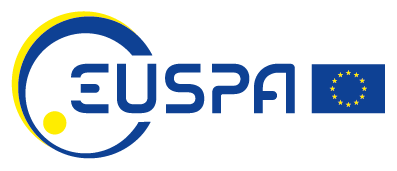




OBJECTIVES
The main objectives of EDGAR are the following:
• To further develop and validate the GBAS DFMC solution so as to modernise and improve air operations, with emphasis on providing safety, availability, and robustness in all situations, including during challenging ionospheric conditions.
• To exploit the distinguishing features of Single-Frequency Multi-Constellation (SFMC) GBAS brought by the addition of Galileo.
• To facilitate CAT II service to GAST C users based on a GAST D (GBAS approach service type based on GPS L1) ground station with EGNSS integration.


Advantages of using Galileo in GBAS
DFMC GBAS can bring significant technical benefits by improving robustness and performance of the navigation solution. The use of two frequencies and two or more constellations (more satellites in view) will help:
1) To mitigate vulnerabilities in the presence of ionospheric disturbances
2) To stabilize the accuracy of the navigation solution over larger areas at the airport
3) To improve the robustness and reliability of the system in environments of radio frequency interference affecting a single frequency.
4) To increase the strength to withstand ionospheric scintillation.
The improved performance achievable with DFMC GBAS might open the door to new operations (such as airport ground movements) and new users in the future.
SFMC GBAS CAT III is expected to be a natural fallback of DFMC GBAS and so needs to be specifically developed in parallel to DFMC. SFMC GBAS introduces the benefits mentioned above from using multiple constellations and is expected to increase the availability of GBAS service with respect to GAST D due to a higher number of satellites in view.
The use of EGNSS (Galileo or EGNOS) to enhance GBAS GAST D with ionospheric monitoring could improve the performance of the system and would allow GAST C airborne users to enable CAT II operations (CAT II on GAST D for GAST C users). This would yield improved air operations for a wider range of users in view of the current GBAS CAT I (GAST C) equipment rate with respect to GBAS CAT III (GAST D). The inclusion of EGNSS within GAST D is aligned with the need for an intermediate step towards DFMC GBAS.
Evolving from SESAR
EDGAR aims at progressing the results from SESAR 2020 Wave 2 in the following areas:
1) Technical and operational requirements for DFMC GBAS based on ground and airborne inputs to drive the ICAO Standards And Recommended Practices (SARPs) proposal
2) Monitor design updates and TRL4 maturity for the DFMC GBAS system.
3) Validation of system robustness upon anomalous ionospheric conditions based on data gathered from solar cycle 25.
4) Validation of system robustness upon radio frequency interference.
5) Standardization proposals for DFMC GBAS and SFMC GBAS CAT III. Support to existing working groups on DFMC at EUROCAE (WG-28 GBAS, WG-62 Galileo), RTCA (SC-159 Navigation Equipment Using the Global Navigation Satellite System) and ICAO level


